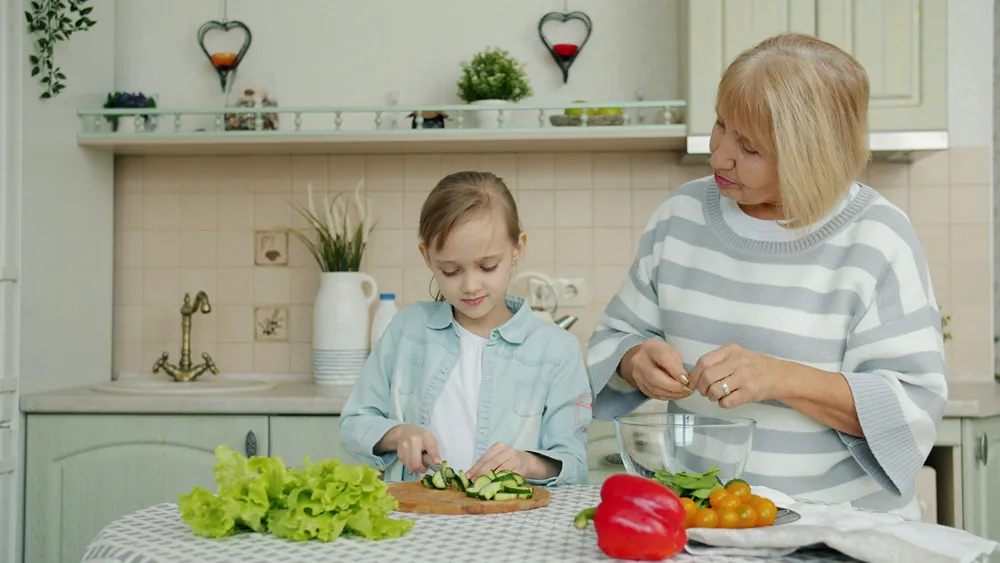Building Healthy Daily Habits For Kids In A Fast-Paced Digital World
Parents today are constantly trying to keep up with the speed of modern life, juggling school schedules, digital devices, after-school activities, and the endless distractions that compete for a child’s attention. It’s no surprise that many families are turning to simple, reliable routines to keep everyone grounded.
For some, that means choosing small nutritional supports, like bariatric chewable multivitamins, as an easy way to stay consistent on busy mornings. Others focus on building healthier snacking habits throughout the day, even keeping wholesome options such as pecans around to make better choices more effortless.
And while these little decisions may seem unrelated to the challenges of raising kids in a digital world, they actually reflect a larger shift toward household rhythms that promote stability, health, and mindful habits, online and offline. When kids grow up in an environment where healthy routines are modeled naturally, they’re more likely to adopt them themselves.
Why Kids Need Predictable Routines More Than Ever
Children thrive on structure. Predictability gives them a sense of safety, reduces anxiety, and helps them understand what is expected of them. In today’s world, where technology provides constant stimulation, consistent routines are becoming even more important.
Daily structure helps counteract the “always on” feeling created by:
- fast-paced digital content
- instant notifications
- quick entertainment rewards
- increased social comparison
- information overload
Without routines, kids may struggle with self-regulation, find it harder to focus, and become more reactive emotionally. Creating even simple daily patterns around schoolwork, eating, movement, and tech use can restore a sense of balance.
Research from the American Academy of Pediatrics emphasizes that structured daily routines help children develop self-discipline, improve sleep, and reduce behavioral issues. When children understand the rhythm of their day, their brains spend less energy navigating uncertainty and more energy on learning and growth.
The Role Of Nutrition In Supporting Attention And Emotional Stability
Healthy habits begin with how kids fuel their bodies. Nutrition plays a powerful role in mood, focus, and energy levels, especially for children navigating digital learning, homework, and screen-heavy environments.
Stable blood sugar supports better concentration, while nutrient-rich foods improve cognitive function and emotional control. Conversely, kids who rely on sugary snacks, irregular meals, or low-nutrient foods may experience:
- faster emotional swings
- difficulty focusing
- irritability or restlessness
- reduced motivation
Parents don’t need complex meal plans to improve their child’s nutrition. Simple, consistent choices, balanced breakfasts, easy-to-grab healthy snacks, and nutrient-dense foods, are enough to create a noticeable difference. When daily nutrition feels natural instead of forced, kids adopt healthier habits without resistance.
Creating Tech Boundaries That Actually Work
Technology is now woven into every part of a child’s day, schoolwork, communication, entertainment, and even social identity. Instead of avoiding it entirely, parents can teach kids to use technology in ways that support their wellbeing rather than overwhelm it.
Effective tech boundaries are:
- clear
- consistent
- balanced
- modeled by parents
Examples include:
- device-free meal times
- a “family charging station” outside bedrooms
- set screen-free hours before bed
- shared media experiences instead of isolated use
The goal isn’t to restrict kids endlessly, but to create an environment where screens serve a healthy purpose rather than dictate the day.
When children grow up with reasonable tech expectations, they learn digital citizenship skills naturally and are less likely to struggle with overstimulation.
Teaching Kids To Self-Regulate In A Digital Environment
Self-regulation, the ability to control impulses, emotions, and behavior, is one of the most important skills children can develop. Screens, however, can quickly undermine it. Many digital platforms are intentionally designed to keep kids clicking, watching, or scrolling.
Helping children develop self-regulation today includes:
- teaching them to recognize signs of fatigue
- helping them notice overstimulation
- guiding them to take breaks voluntarily
- encouraging offline activities that reset the brain
Outdoor play, creative hobbies, reading, and hands-on learning all strengthen a child’s ability to manage their own attention and emotions. These offline activities create mental contrast, something digital content alone cannot provide.
When kids learn to pause, redirect themselves, and recharge, they become healthier digital citizens and more resilient learners.

Integrating Movement Into Daily Routines
Kids today sit more than any previous generation. They sit at school, sit while doing homework, and sit during screen time. Movement, however, is essential for healthy development, especially for attention and sleep.
Parents can create movement-friendly routines by:
- scheduling outdoor time after school
- doing family walks
- encouraging kids to stretch or take breaks between lessons
- choosing active weekends over screen-heavy ones
Movement increases oxygen flow to the brain, boosts mood, and helps regulate stress hormones. Even short bursts of activity throughout the day can dramatically improve how children feel and behave.
Why Modeling Healthy Behavior Matters Most
Children absorb far more from what they see than what they are told. When parents practice healthy digital habits, eat mindfully, take breaks, create structure, and respect boundaries, children internalize that behavior.
Modeling might include:
- keeping your phone away during conversations
- choosing healthier snacks yourself
- practicing screen-free bedtime routines
- showing interest in reading, learning, or creative projects
- demonstrating calm problem-solving
When kids witness parents prioritizing wellbeing, they start doing the same, without it feeling like a rule or a chore.
Building A Family Culture Of Balance
Healthy habits thrive in a supportive environment. A home doesn’t need to be perfect to be balanced; it simply needs consistent signals that health, respect, rest, and communication matter.
Families can build this culture by:
- celebrating small wins
- creating shared routines
- talking openly about feelings
- reviewing tech boundaries together
- making healthy choices visible and accessible
A balanced home environment acts like a foundation that kids return to every day, something predictable in a fast-paced world.
Creating Habits That Grow With Your Child
As children grow, their needs, schedules, and interests change. Healthy routines should evolve with them. A routine that worked for a 7-year-old will look different when they are 14. The key is flexibility with a commitment to consistency.
A strong foundation, nutritious food, clear tech boundaries, regular movement, open communication, and predictable rhythms, will support kids through every phase of development.
With the right habits, today’s children can navigate a digital world with resilience, health, and confidence.






